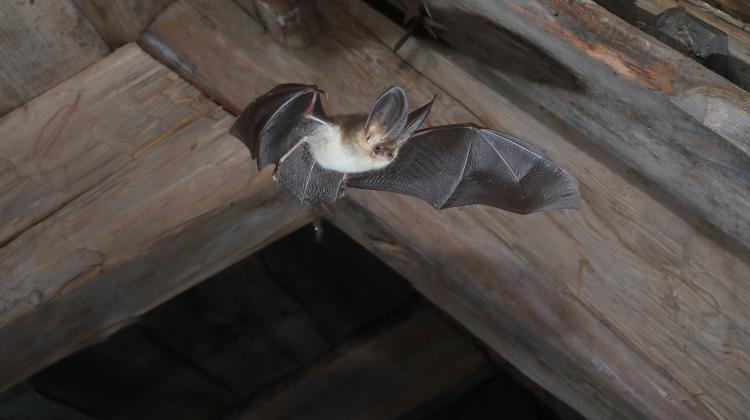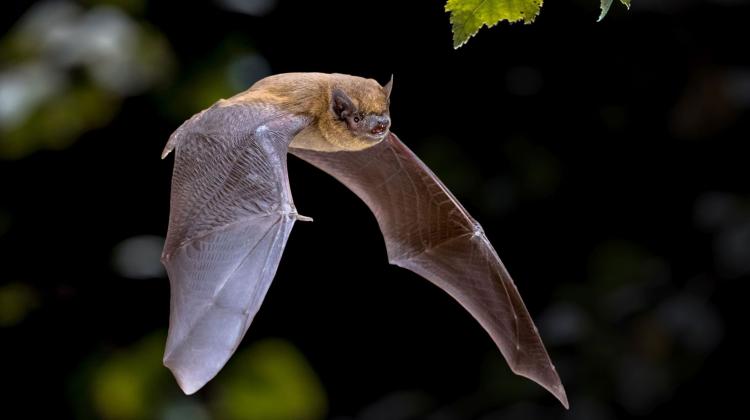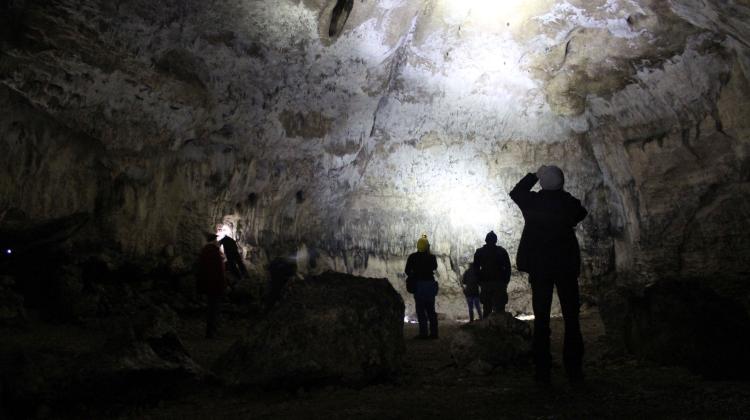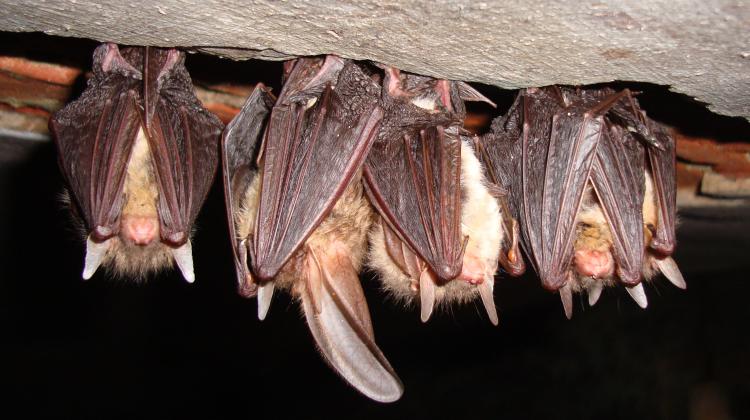Polish bats are not afraid of moonlight
 Long-eared bat. Credit: Professor Jens Rydell
Long-eared bat. Credit: Professor Jens Rydell
Light at night makes bats an easier prey for predators, such as owls. This is such a big threat that in equatorial climates, bats limit their activity during the full moon. Meanwhile, researchers have now shown that bats in Poland are completely unconcerned by the Moon's glow during swarming. Where do these differences come from?
Bats are one of the first mammal species that come to mind when nocturnal animals are mentioned. 'In fact, most mammals are more active at night. This strategy reduces the likelihood of falling prey to predators,’ Dr. Grzegorz Apoznański from the Wrocław University of Environmental and Life Sciences tells PAP.
EQUATORIAL LUNAR PHOBIA
In the 1970s in Panama (near the equator), researchers observed lunar phobia - fear of moonlight - in local bats. During the full moon, when the nights are brighter, the bats become an easier prey for their natural enemies, including owls or snakes. Therefore, the local bats prefer to stay hidden on brighter nights.

The question is whether the Moon's glow is also perceived as a threat to bats in temperate latitudes. After all, we have different bats, different predators, and a different intensity of moonlight. Polish researchers answer this question in their paper published in Scientific Reports.
Team leader Dr. Apoznański points out that bats from Panama that avoid the full moon include large fruit-eating species. Meanwhile, all bats living in Poland - there are 27 species of them - eat insects and are quite small. The enemies of bats here are mainly owls, but bats are not the basis of their diet. Seasonally, flying mammals may also fall prey to martens and cats. Does moonlight also affect the behaviour of bats in Central Europe?
THE MOON AT THE EQUATOR AND THE POLES
'It may seem that the Moon is equally bright from every place on Earth. But this is not the case. Although the Moon does not orbit the Earth exactly around the equator (it is tilted by about 5 degrees), it is much more visible from equatorial regions than from the poles,’ says Dr. Apoznański. In addition, at the equator, the light during each full moon during the year - in nice weather - has more or less the same brightness, while the closer to the poles, the lower the intensity of the Moon's light is in summer. 'And so in equatorial regions, the brightness of the Moon's light near the Earth is 20 times greater during the full moon than near the pole,’ says Dr. Apoznański. Precise calculations of the Moon's intensity at different latitudes - used by researchers - are available in Michał Śmielak's algorithm.
Another factor that distinguishes Poland’s zone from the equatorial one is how bright it is at night. Near the equator (this time due to the tilt of the Earth's axis to its orbit), the nights are of similar length and darkness all year round. The moon is the most important source of light at night. Meanwhile, in the temperate zone, the nights in the warm season (when Polish bats are active) are bright not because of the Moon, but because of the Sun, which only briefly hides below the horizon (astronomical night occurs only when the Sun is more than 18 degrees below horizon). So if European bats were afraid of light at night, they would have to stay hidden for most of the summer...
FIELD RESEARCH
Therefore, the researchers guessed that lunar phobia would not occur in European latitudes, but they wanted to confirm it with observations. They examined swarming bats in the Międzyrzecz Fortified Region (Lubusz province). 'This is one of the ten largest bat hibernation sites in the European Union. As many as 38,000 bats of several species spend the winter there,’ says Dr. Apoznański. Bats fly there from long distances in late summer to swarm. During the study, scientists caught bats in nets, counted them, marked species and described their age and sex structure. At the same time, they also examined their activity during different phases of the Moon.
IN FULL VIEW
It turns out that there is no relationship between the phase and intensity of the Moon's light and the activity of bats in the Międzyrzecz Fortified Region - bats are equally willing to leave their hideouts on lunar nights and during the new moon. Typically, scientists expect to find clear relationships between the phenomena they study. In this study, however, the graphs showing the relationship between bat numbers and moonlight were completely flat. This means that lunar phobia has not been observed.
Apoznański points out that although the study has so far only been carried out during swarming (late summer/early autumn) - because that is when it is easiest to catch animals in nets and count them - it is expected that it will be similar in other months, which is preliminary known from other studies conducted in Sweden.
ARTIFICIAL LIGHTING, REAL DANGER
While the moonlight does not scare bats, it still does not mean that bats like light at night. The chiropterologist points out that the moonlight - which does disturb some species of bats - is almost imperceptible compared to artificial street lighting. 'Bats are our allies - they help reduce the population of mosquitoes and black flies. Therefore - in warmer climates - they help fight malaria. And yet we do not appreciate them enough. A researcher friend, Dr. Magnus Gelang, told us how a street lamp was placed somewhere in Kenya near the mouth of the cave where the bats were sheltering. Soon, all these animals left the cave. The light bothered them too much. Sometimes good intentions combined with ignorance can do more harm than good,’ says Apoznański.

However, when asked whether artificial lighting can sometimes help bats hunt by attracting night insects, he says that old-type lighting (mercury lamps) had a spectrum of light that attracted insects. Therefore, it made hunting a bit easier for some bats. However, the vast majority of bats are photophobic. Sodium lamps were much less interesting for insects and modern LED lighting has a spectrum that is not interesting to insects at all. Therefore, it does not help bats find food, and in addition it makes bats an easier prey for their enemies.
This means that if we want to take care of our flying allies in the fight against mosquitoes and black flies, we should limit the lighting in our neighbourhood to the amount that us really necessary.
PAP - Science in Poland, Ludwika Tomala
lt/ agt/ kap/
tr. RL
Przed dodaniem komentarza prosimy o zapoznanie z Regulaminem forum serwisu Nauka w Polsce.


















